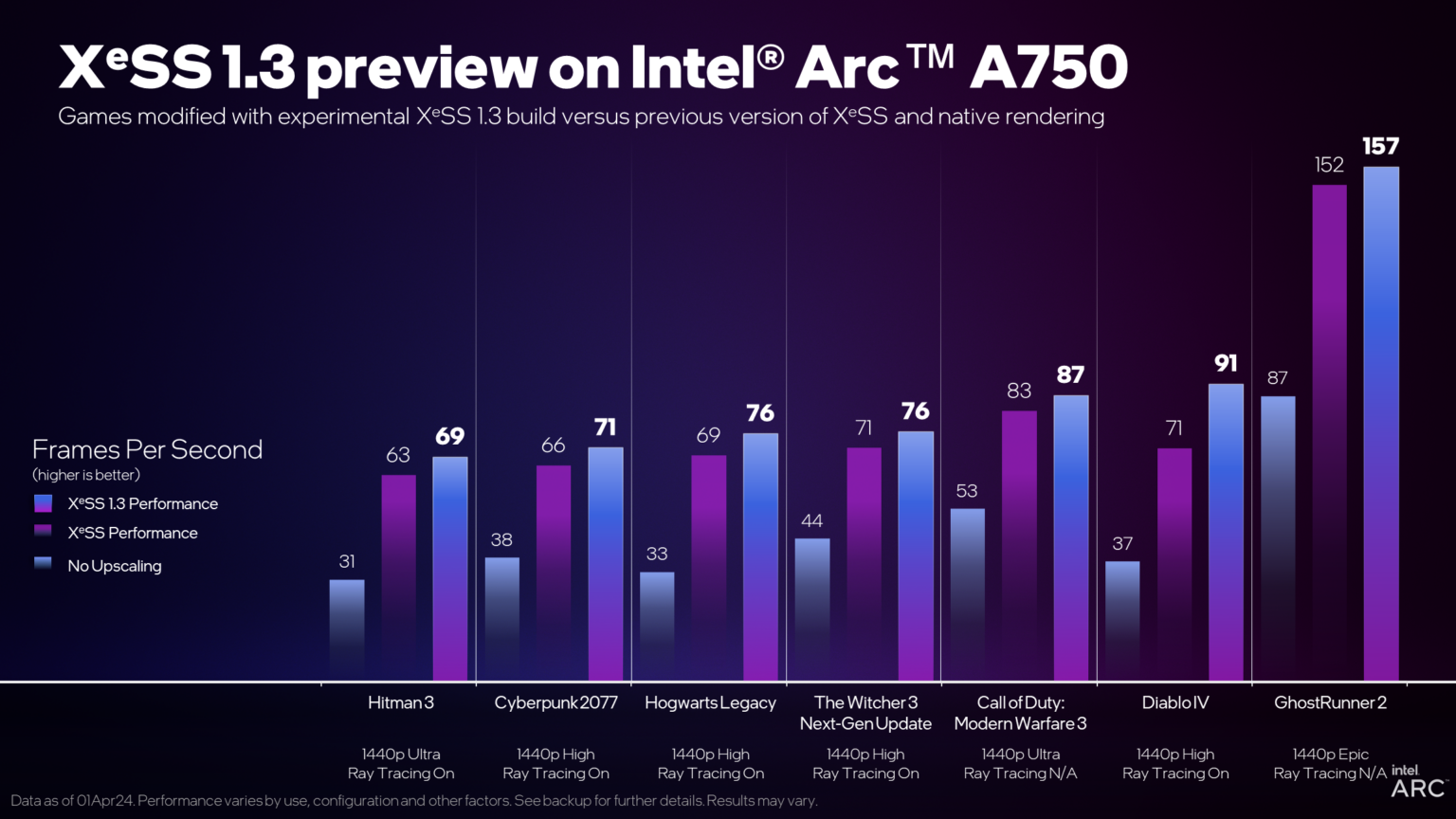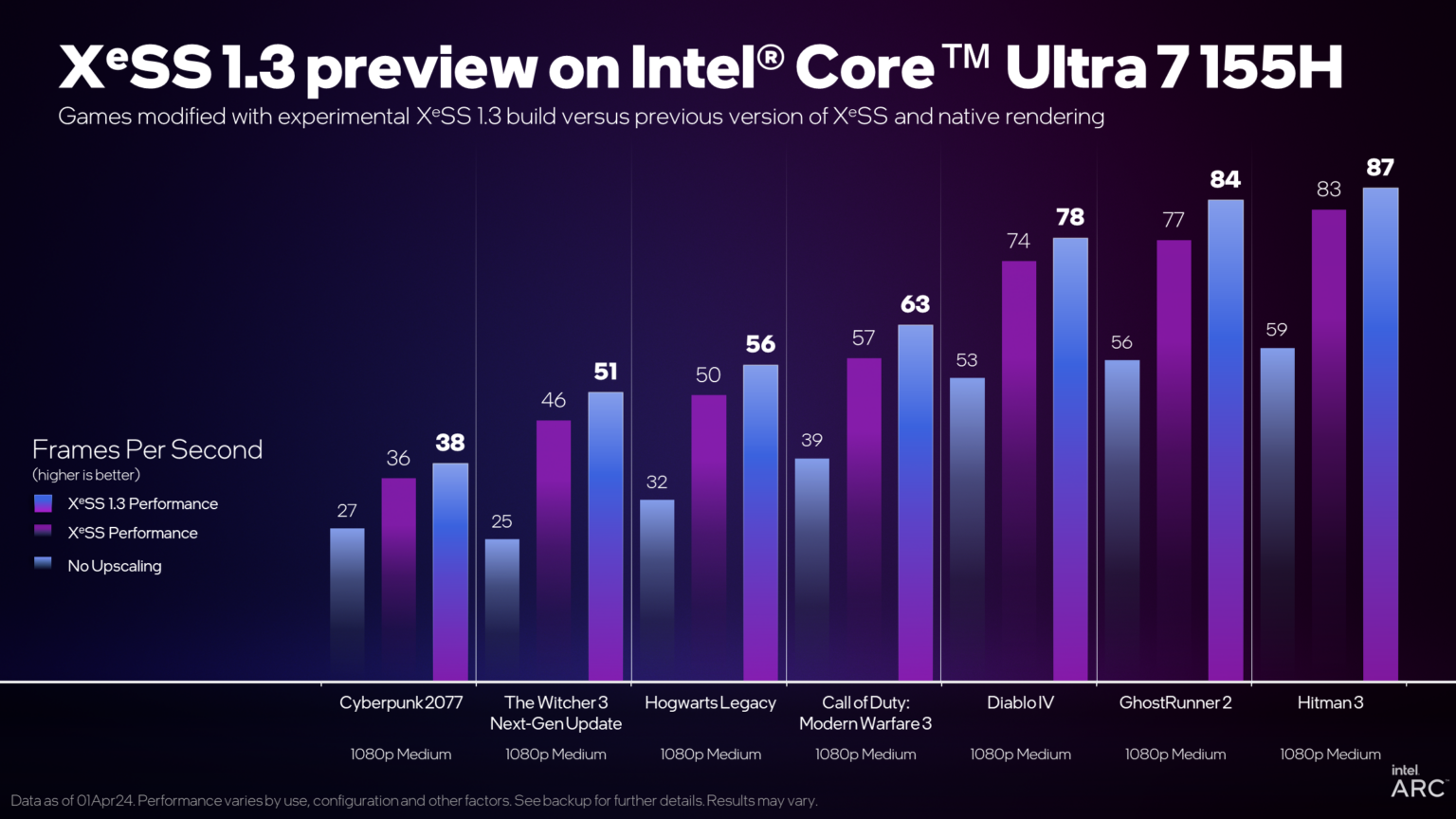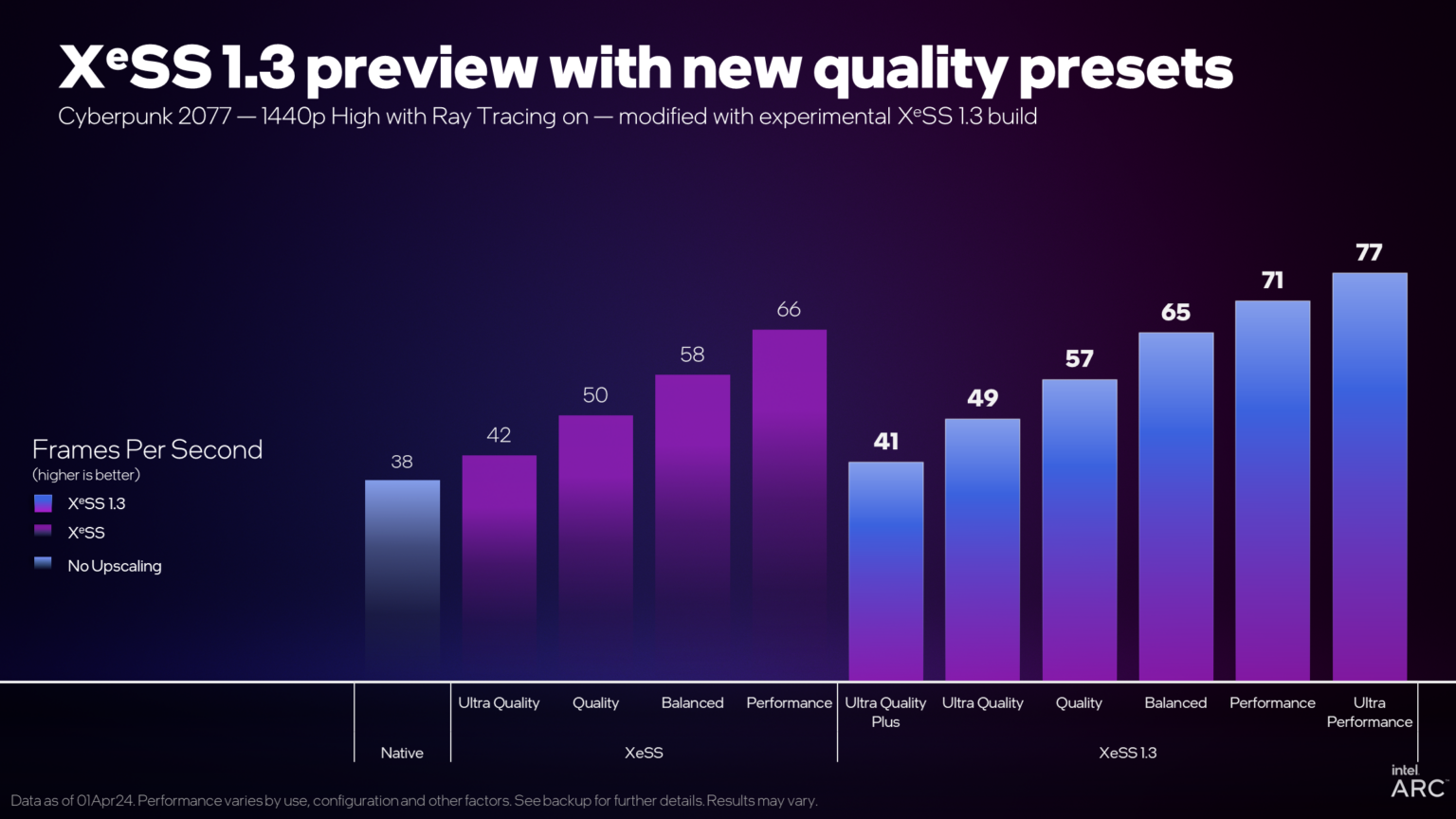Intel's XeSS 1.3 SDK has been released with a host of new presets, faster performance and improved image quality
More speed and better image quality? Yep, I'll be having some of that.

Intel's XeSS upscaler might not quite have the developer support of something like Nvidia's DLSS, but it's proven itself quite a competent performer. Now the most recent Intel XeSS 1.3 SDK has been released, and Intel has been keen to show off some significant performance improvements and improved visual quality to boot.
The most recent update adds several new quality presets, including Ultra Quality Plus, Ultra Performance and Native Anti-Aliasing, the last of which being an equivalent to Nvidia's DLAA or AMD's FSR 3 Native setting (via Wccftech). Ultra Quality Plus, meanwhile, is a 1.3x resolution scaling setting, replacing Ultra Quality, which is now moved further down the list to a 1.5x resolution scale.
Ultra Performance is said to be a three times resolution factor mode for, you guessed it, the best performance. However, in order to keep image quality to a maximum, the new SDK makes use of updated AI models that Intel says delivers more detailed reconstruction, better anti-aliasing, less ghosting, and more temporal stability.
In practice, that should mean fewer image artifacts than previous generations of the model, and to demonstrate it the company showed off some brief footage of a scene from Like a Dragon: Ishin! in which a character moves in front of some bamboo matting on a nearby wall.
While it's not clear which exact preset is being compared to previous versions, the footage shows much less flickering and visual artifacts in the new version, compared to the "before" comparison.
When it comes to performance, Intel has released some figures created by using a modified build of XeSS injected with the updates made in version 1.3, in order to show the difference the new version makes in games that are yet to officially support it. These performance figures were recorded on both the Intel Arc A750 GPU and the Intel Core Ultra 7 155H CPU with the built-in Arc GPU.


While the performance figures tend to show an improvement of around five to seven fps in most games tested, of note is the improvement to Diablo 4 with the ray tracing settings enabled. I happened to test the new settings for myself recently, and found that on average it tended to halve the performance of the game in comparison to ray tracing disabled, so demonstrating a significant 20 fps gain compared to the previous version of XeSS under such demanding conditions is impressive if these figures prove to be accurate.
Keep up to date with the most important stories and the best deals, as picked by the PC Gamer team.
For a more complete breakdown of what you might expect in a demanding title when running through the different quality presets, a comparison in Cyberpunk 2077 was shown at 1440p high settings, again with ray tracing enabled.

Ultra Performance mode appears to offer a six fps gain over the quality setting in XeSS 1.3, but it's in comparison to the previous version of XeSS where the difference really seems to be being made.

Best CPU for gaming: The top chips from Intel and AMD.
Best gaming motherboard: The right boards.
Best graphics card: Your perfect pixel-pusher awaits.
Best SSD for gaming: Get into the game ahead of the rest.
A whole 11 fps gain over the previous lowest XeSS setting is pretty significant, although whether those image quality improvements make it comparable in terms of fidelity, we'll have to see for ourselves.
Still, I'll take any upscaling improvements I can get, particularly from a solution that can run on any modern GPU. The SDK is currently available on GitHub, and Intel says it'll be working with game developers to makes it easier to integrate into games currently in production, so hopefully we'll get a chance to run it for ourselves soon and see what sort of performance and image quality the new update can bring to the table.

Andy built his first gaming PC at the tender age of 12, when IDE cables were a thing and high resolution wasn't—and he hasn't stopped since. Now working as a hardware writer for PC Gamer, Andy's been jumping around the world attending product launches and trade shows, all the while reviewing every bit of PC hardware he can get his hands on. You name it, if it's interesting hardware he'll write words about it, with opinions and everything.

